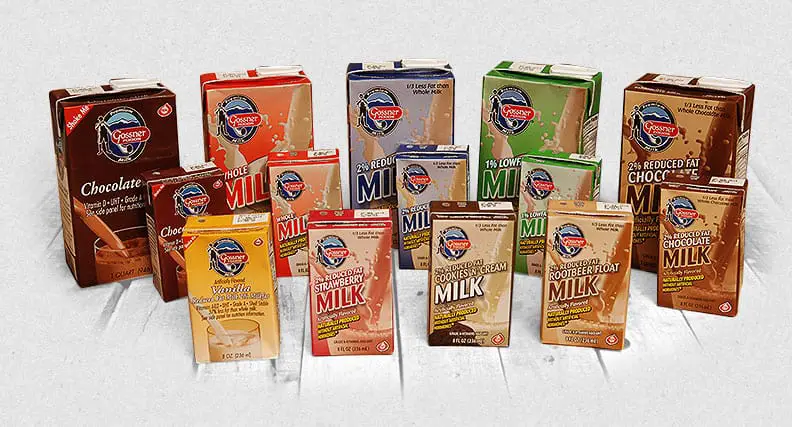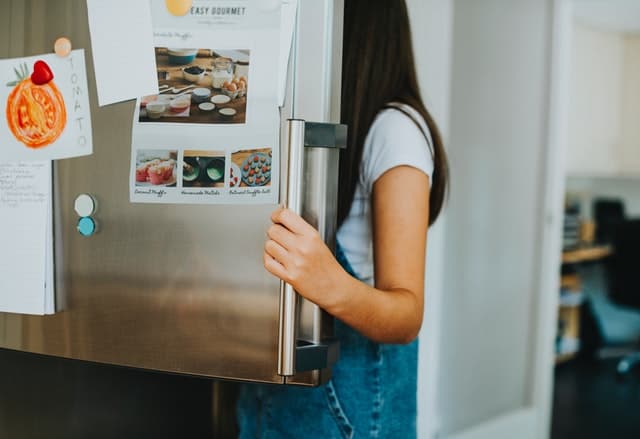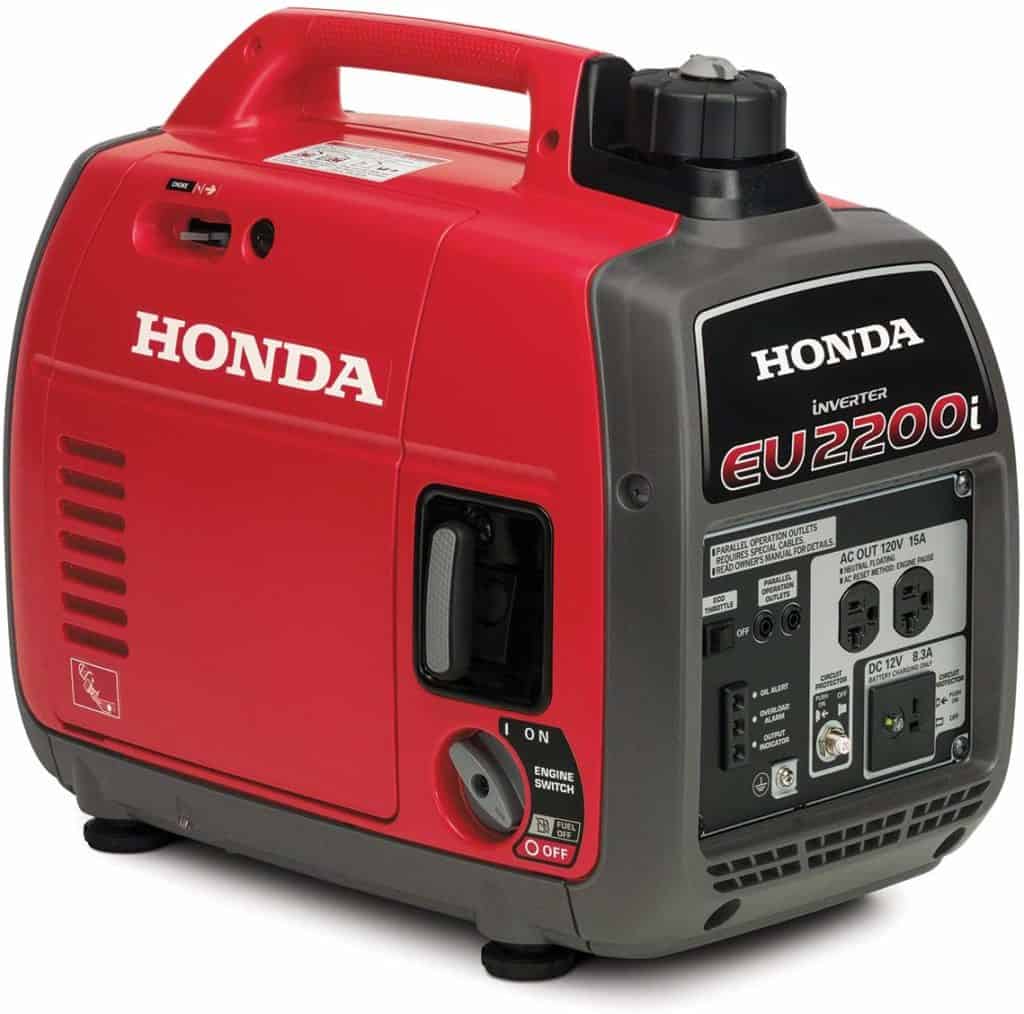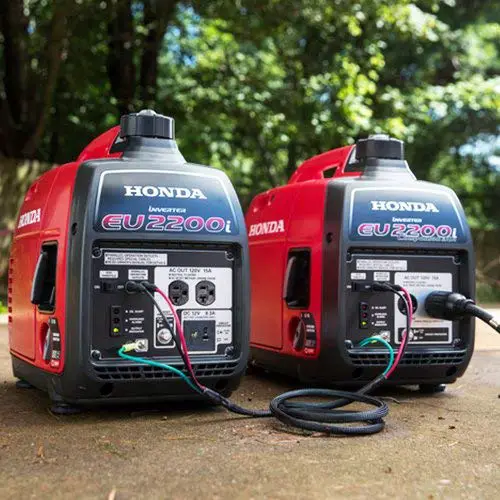Food storage planning and budgeting can feel overwhelming and discourage many from taking action, even preventing them from starting to build any kind of extra food supply at all. For others food storage may not even be a thought in their mind because let’s face it, there are a lot of other things to spend money on such as a kid’s birthday, rent, a mortgage, or a new car. Quite honestly, my wife and I both put off building a food supply for a long time because even though we knew that we needed it we both felt overwhelmed and didn’t know where to start. I’m here to tell you that getting started on building a 3-month food supply is not as difficult or as expensive as you think!
For help getting started and becoming more self reliant check out our guide on how to start prepping for beginners.
3 Month Food Supply vs Long Term Food Storage
First, let’s look at the difference between a 3-month food supply and long-term food storage. A 3 month or short-term food supply is different than long-term food storage and I have found it to be much more enjoyable to build up! Long-term food storage is storage that lasts 3 months to 1 year or longer. One thing that I find hard to “digest” with long-term food storage is that it often involves meals like MREs and other military-type meals that simply taste disgusting. These types of meals may have a long shelf life (years) but I won’t eat them on a regular basis, so when they do go bad 30 years down the road I will end up throwing them away. However, I do recognize the value of having these meals in a long-term food storage and would even recommend having them in your home’s cold storage room or designated storage closet in case of extreme emergencies. In contrast, short-term 2 weeks to 3 months of food storage allows you to eat foods and meals that you are already cooking and that taste great.
Starting a 3-month food supply won’t require you to dramatically change the meals and foods that you are already preparing and eating. It may take a little more preparation up front but will make meal planning easier down the road. This is accomplished by setting up a food rotation system in your pantry, cupboards, and food storage areas. We will talk more about this later in this article.
How does a 3-Month Food Storage help you and your family?
- Provides easy day-to-day meal planning
- Saves money during economic downturns and challenging times.
- It gives you peace of mind in case of emergencies, potential income drop or job loss, and natural disasters.
- It gives you control over what your family eats.
- Helps plan healthy nutritious meals.
How to Start a 3-Month Food Supply
Getting started can be as simple as buying an extra can of ‘this’ and an extra bag of ‘that’ every time you go to the grocery store. Half of the trouble is meal planning and gaining new ideas about what to add to your pantry. Whatever approach you decide to take it is important that you include foods that you and your family will eat.
With the cost of groceries being so high in recent years we have worked hard to save money on groceries and bulk food storage. To help make it easy see which grocery stores have the cheapest groceries and for bulk foods consider finding an Amish store near you.
Track Your Meals Method is one of my favorite strategies for building a short-term 3 month supply of food.
Supply list – What Should You Include in Your 3 Month Food Supply?
- Store items that you already keep in your cupboards and pantry
- Include meals, ingredients, and food that you regularly eat
- Store frozen foods
- Include non-food items
Foods that you already keep in your cupboards and pantry
This could be any number of foods that you are already storing at home and eating on a daily or weekly basis. The wonderful reality of a 2-week to 3-month food supply is that most non-perishable foods will work well in your storage plan as long as you are using and rotating your food supply.
The most important question to ask yourself is what foods can we not live without? Then add it to your list and start slowly buying more each time you go to the store. Make sure to set up a good FIFO (first in first out) method for rotating each food item so that you use everything before it goes bad.
An Alternative to Powdered Milk for Food Storage

Gossner U.H.T. Milk
Gossner U.H.T. (Ultra High Temperature) Milk is real Grade A milk that has all the vitamins and nutrition of conventional pasteurized milk and is ready to use. No preservatives are added. Gossner Milk is Ultra High Temperature processed (over 280 degrees for several seconds) and packaged so that it is shelf-stable and stays fresh without refrigeration until the sealed package is opened.
Gossner Milk is a great alternative to powdered milk for your short-term food storage. This milk has a stamped “best by date” that is 6 to 9 months long! Although, from my experience, the shelf life for containers that have NOT been opened is upwards of one year or even longer!
Check the price of Gossner Milk on Amazon here!
Positives
- Tastes like normal pasteurized milk
- Best By Date of 6 to 9 months
- Shelf life for containers that have NOT been opened is up to 1 year
- Milk doesn’t require mixing, just open and drink
- Unopened milk containers don’t need to be refrigerated
- Kids love the small chocolate milk containers and there is no worry about it expiring in the fridge
We visit Gossner Foods regularly and love using their milk in our food storage and drink on a regular basis. We never have to worry about it going bad because we regularly drink and rotate our Gossner Milk storage.
*NOTE- Once containers have been opened you should refrigerate the milk and it will last about as long as normal pasteurized milk.
Canned Foods
Storing and rotating canned foods can be challenging. Applying the FIFO (first in first out) method can get disorganized when dealing with canned food. To help with this we have found having a good canned food organizer and rotator very useful even indispensable. We found one that is cheap and works well to rotate cans making FIFO easy. It is the DecoBros Stackable Can Rack Organizer (Click here to check the current price on Amazon). When we bought a couple of them they were only listed at about $20 each rack and it comes with adjustable plastic dividers making it able to accommodate various can sizes. It’ll store up to 36 cans depending on the can sizes being stored. This canned food organizer will help you build your 3-month food supply and make organizing as easy as pie!
Dehydrated Foods
Including dehydrated foods in your short-term food storage can be a good idea for snacks and ingredients to meals that last for years if stored correctly. Dehydrating your own vegetables, fruits, meat, nuts/seeds, sprouted grains, herbs, and more. For example, we dehydrate our own onions, store them in a mylar bag, and then use them in our cooking regularly. A dehydrator is well worth it if used regularly! To know what dehydrator is right for you check out our article Buying a Home Dehydrator, Best Dryers & What to Know First.
Freeze Dried Foods
Freeze-dried food is one of the best ways to preserve and store foods/meals to have on hand for any circumstance. Freeze-dried food not only stores longer but also preserves nutrition better than other forms of food preservation. Freeze-dried food keeps about 97% of its original nutrition whereas dehydrated food only maintains 60% and canning only 40% of its original nutritional value. To know which freeze-dried foods to try check out our article Best Freeze-Dried Foods: Must-Haves For Any Circumstance.
If you are interested in preserving your own foods and garden harvest then check out our article Buying a Home Freeze Dryer, What You Need to Know First. I own my own freeze dryer and love using it regularly to preserve my garden produce as well as other foods.
Helpful ideas to add to your 3-month food supply list:
- Packages of bottled water, gallon jugs of water, or even 55-gallon drums of water (45 gallons of drinking water per adult for 3 months is recommended) See our Water Storage Calculator.
- Check out our article How to Store Large Amounts of Water: Long-Term Water Storage and 13 Best Water Storage Container Ideas
- White or Wheat Rice
- Pinto or other types of Beans
- Apple Sauce
- Canned Fruit and Vegetables (These make great sides to regularly eaten meals)
- Salt and favorite seasonings
- Peanut Butter
- Soup or broth
- Pasta and spaghetti sauce
- Floor, yeast, and baking powder
- Pancake Mix
- Packets of Oatmeal or just Oats
- Canned Meat (Tuna, Chicken, Beef Stew, Spam, etc.)
- Canned Vegetables (Green beans, peas, corn, tomatoes, etc.)
- Canned Fruit (Peaches, Pineapple, Pears, etc.)
- Powdered Drink Mix
- Snacks (Granola bars, Whatever your family likes!)
Remember to use air-tight containers and oxygen absorbers when storing dry foods long-term. See how to use oxygen absorbers in your food storage.
I include these items simply because they are easy to store, have a decent shelf life, and are used regularly by many people. However, the idea here is that you build a rotating 3-month food supply of foods that you are already eating and enjoying!
We spent hours compiling a list of our favorite food storage items/foods so you don’t have to! See our comprehensive list of recommended food storage items: What are the best foods for long-term storage? We based this list of food items off of our food storage calculator and we sincerely believe it will help make it easier for you to find the essential foods to add to your food storage!
Include meals, ingredients, and food that you regularly eat – Track Your Meals Method
We love the track your meals method and encourage you to give it a try! It allows you and your family to track what you already eat and then break it down by ingredients and add it up over the number of months you want to store it for. The best part about using this method is it can be made for your specific needs.
Here’s how it works for a 3-month food supply: step by step to make it easy.
- Take your family’s favorite meal.
- Write out the recipe and times it by 3 (this will give you 3 months of that meal if you plan on eating it once a month.) If you plan on eating it 2 or 3 times per month then times each ingredient by 6 or 9, etc.
- Buy enough of the items to stock your pantry for 3 months of that meal.
- Do it again for the next meal.
Meal Name: | Eat 1 time per month for 3 months | Eat 2 times per month for 3 months | Eat 3 times per month for 3 months | Eat 4 times per month for 3 months |
|---|---|---|---|---|
Ingredient #1 | x 3 | x 6 | x 9 | x 12 |
Ingredient #2 | x 3 | x 6 | x 9 | x 12 |
This is a great way to plan your meals for a 3-month food supply!
Store Frozen Foods

Store frozen foods… But wouldn’t they go bad in an emergency if the power goes out? Technically, yes frozen foods in your freezer or refrigerator could go bad if the power goes out for multiple days. However, there are a couple of good reasons to store up to 3 months of frozen foods in your short-term food storage.
First, having frozen foods as part of your short-term food storage gives you a greater variety and a wider range of meal options that you can regularly eat. This is important because you likely are including frozen or refrigerated foods in your daily meals right now. I don’t know about you but I find it worth being prepared enough to continue using those frozen foods even in the case of an emergency. A Power outage is a real concern though, especially if you live in a high-risk area for natural disasters. Emergencies happen around the world on a daily basis so I would suggest adding an alternative power source, such as a generator, to your 3-month food supply list of things to buy.
Second, buying frozen foods in bulk can save money and if you run into financial hard times like a job loss then you can be assured that you have a variety in your food supply. My wife and I keep months worth of meat (beef, chicken, etc.) in our freezer. I love this because I know that we saved money and when I am craving a Sirloin Steak I just pull one out of the freezer, marinate it, and toss it on the grill. We easily have a 3-month plus supply of frozen foods in our garage freezer.
Include non-food items in your 3-month food storage plan
Get a 3-month supply of NECESSITIES such as
- Water Filters,
- medications and painkillers,
- Basic First Aid Kit,
- toilet paper,
- toiletries,
- cleaning/sanitation supplies,
- a space heater,
- an alternative power source,
- Flashlight,
- Extra Batteries
- Duct Tape,
- Extra Blankets,
- Extra Warm Clothing,
- Matches/Lighter/Lighter Fluid,
- Portable Gas Stove and extra propane canisters,
- Cooking Pot,
- etc.
Alternative / Emergency Power Sources
- Solar Panels
- Generators
Solar Panels
Recently I have been concerned about power outages and have found a couple of viable options to preserve frozen food storage as well as other necessities that require power. An interesting option is Solar Panels with enough Watts of power to run a freezer if a power outage did occur for an extendable period of time. Average-sized solar panels produce between 275 to 325 Watts of power per hour (kWh) of direct sunlight which is said to be around 4 hours per day on average. So if your freezer requires 600 Watts then obviously it will require several solar panels to start your freezer and keep in running for the needed time to keep foods frozen.
Solar panels are a great alternative power source to power many things in your home. If you choose to buy solar panels make sure to do your homework and get the right size and quality to fit your specific needs. There are many variables to consider when purchasing solar panels in addition to the quality and size of the panels so study it out and know exactly what you want from them.
Generators

Generators are a great alternative source of power, especially in emergencies like short-term power outages. If you have a power outage that lasts for more than 24 hours then having a generator with a few gallons of fuel will be invaluable. Compared to solar panels, generators are much cheaper, easier to store, and much easier to transport. Our favorite generator is the Honda EU2000i Inverter Generator (Click here to check the current price on Amazon). My Father-in-law owns this Honda generator and loves it! Here are our top reasons and details:
- Good power output – it has 2000W starting power, stabilizing at 1600W continuous power (this is enough to power the typical home freezer)
- Great for overnight power – Runs 3.4 hours at full load and over 8 hours at quarter load on less than one gallon of fuel in its tank
- Incredibly quiet – Special sound-dampening materials make it one of the quietest generators out there
- 59 decibels at maximum rated load and 53 decibels at quarter load, it’s super quiet, your neighbors will thank you!
- Lightweight – weighing less than 46 pounds, it’s incredibly lightweight and portable
- 3 full-year warranty

It’s also expandable meaning you can double your power by connecting it with the Honda EU2200IC Companion for up to 4000 Watts of power. If you are like my Father-in-law then you will want to get the Honda EU2200i Generator with EU2200IC and Parallel Cables set (Click here to check the current price on Amazon). My Father-in-law regularly uses these two companion generators to fully power his camping trailer and then keeps them for at-home emergencies.
Just one of these generators produces enough power to run more than just a freezer or refrigerator but if you are interested in powering multiple large appliances at the same time even you will want to work toward the Honda two companion set.
*It may be a good idea to start with the one generator first seeing as it is kind of pricey to purchase both.
Budget for a 3 Month Food Supply
Create a plan for purchasing. Budget some money each month for expanding your pantry. Your budget can be as simple as dedicating an extra $10 a week to building up your 3 month food supply. You can budget more or less than this it doesn’t really matter, what’s important is that you actually start buying a little extra every time you go grocery shopping.
My wife makes it super simple. When things are on sale, she will buy what we normally would use and then adds double that amount to go toward our 3 month supply. For example, if she picks up 1 can of corn then she’ll also add 2 additional cans just for food storage. She calls this trick “one for now, two for later!”
Rotate the food on your shelves and in your pantry
As you build your food supply you will quickly realize that you have extra foods and cans that will need to be marked or kept track of in some way so that you know when it expires. The easiest way to deal with this is to simply have a good FIFO (first in first out) system. All the new food items that you buy will go to the back of your shelves and the older items will move forward so that you use those older items first. It really is as simple as that.
*Create a plan for rotating your items – use it and rotate your food storage on a regular basis so that you never have expired food in your short term food storage.
How much food storage do you need for 3 months?
How about a 3 month food supply for a family of 4?
| Food Supply | 3 Month food supply for 1 person | 3 Month food supply for a family of 4 |
|---|---|---|
| Grains (Wheat, Rice, Flour, etc.) | 98 lbs | 390 lbs |
| Canned or Dried Meats (Freeze Dried, Beef, Jerky, Spam, fish, chicken, etc.) | 5 lbs | 20 lbs |
| Fats and Oils (Vegetable Oil, Peanut Butter, Shortening, etc.) | 7 lbs | 25 lbs |
| Beans (Dried Beans, Soy Beans, Split Peas, Dry Soup Mix, etc.) | 18 lbs | 70 lbs |
| Milk and Dairy (Powdered Milk, Evaporated Milk, etc.) | 22 lbs | 87 lbs |
| Sugars (Sugar, Brown Sugar, Honey, Powdered Drink Mixes, etc.) | 15 lbs | 60 lbs |
| Cooking Essentials (Salt, Baking Powder, Yeast, Vinegar, Jams, etc.) | 2 lbs | 8 lbs |
| Fruits & Vegetables (Dried) | 8 lbs | 90 lbs |
| Fruits & Vegetables (Canned) | 27 qts | 320 qts |
| Water Storage | 46 Gallons | 183 Gallons |
The above table was based on research that we did to create a food storage calculator. To determine exactly how much food your family will need, click on this link to try our easy-to-use Food Storage Calculator.
Conclusion
“Whatever can go wrong will go wrong,” is a little too pessimistic of an outlook for us but there will inevitably come challenges for each of us at some point in our life. Being prepared for unforeseen challenges and disasters will prove worthwhile for you and your family. Starting with a 2 week food supply and working up to a full 3-month supply of foods and meals that you regularly eat brings a wonderful, relieving peace of mind. A kind of life insurance policy that will keep your family alive and happy. We sincerely hope that this 3 Month Food Storage Plan: a Guide to Getting Started has been a helpful, easy resource and encouragement to get going!


